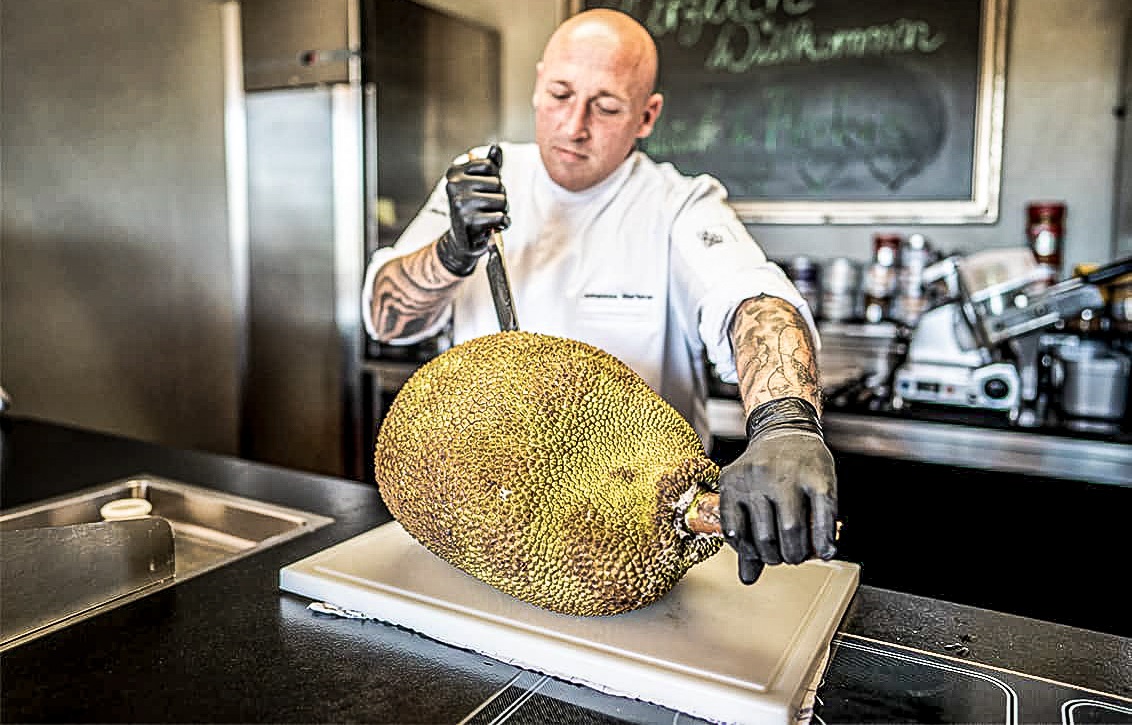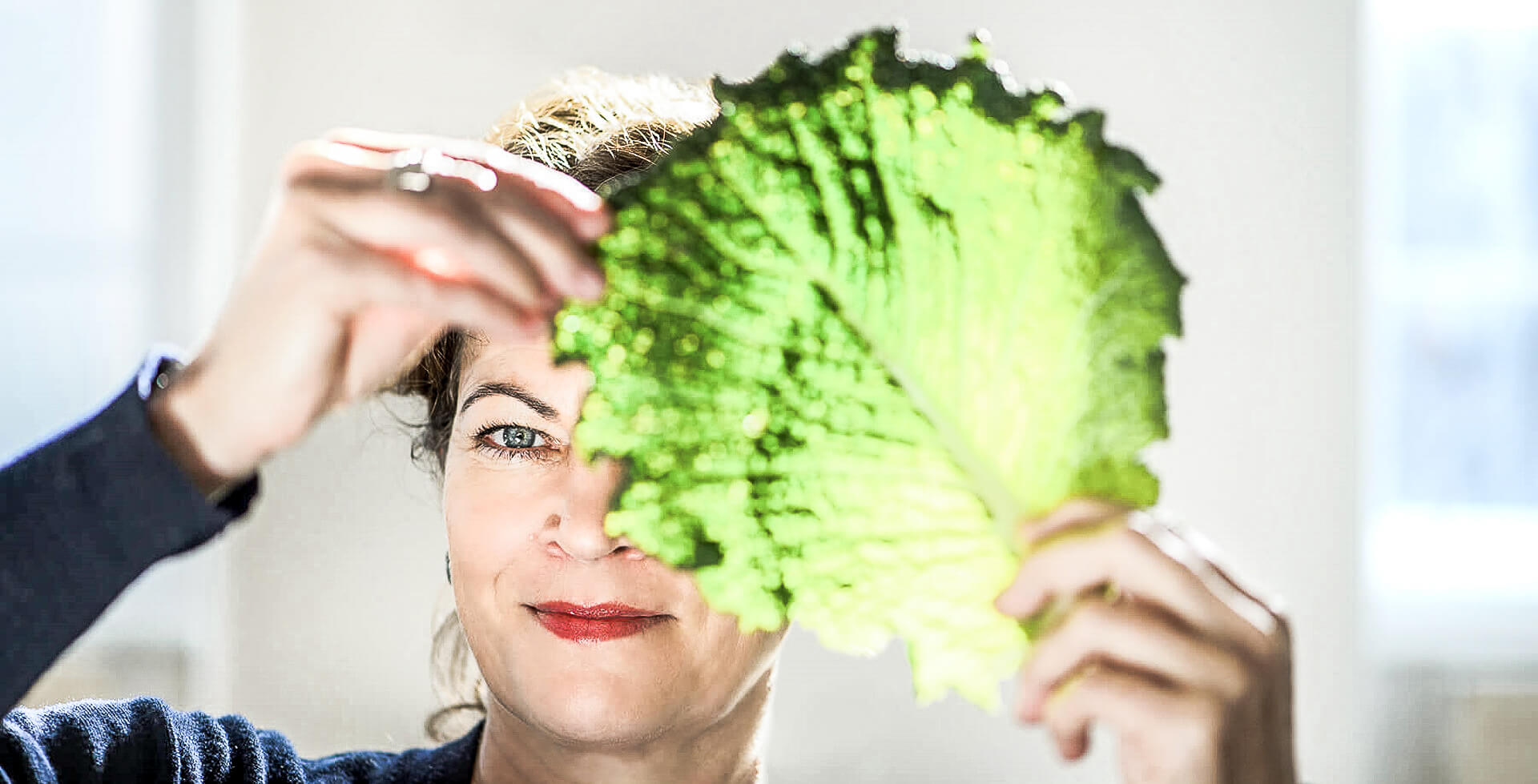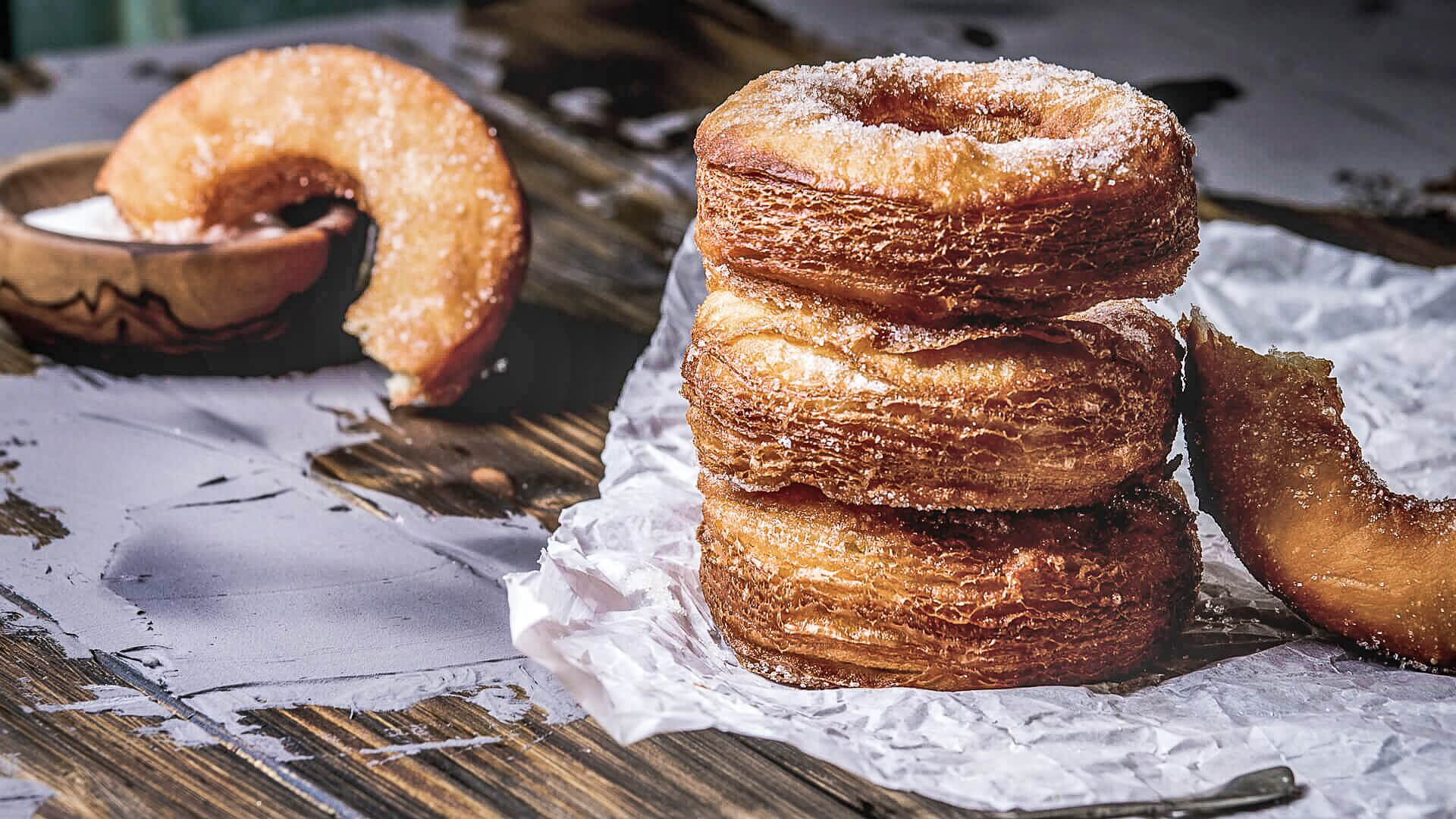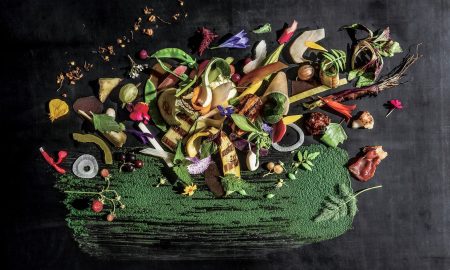With apologies to Karl Marx: a tropical phantom is haunting Europe. Hip vegans with gluten allergies are praising it to the skies on blogs and food channels, usually in the form of recipes with suspiciously un-vegan names like “BBQ Pulled Pork with Mango Salsa and Cashew Cream” or “Meatball Tacos”. Not that vegans have ever pulled any punches when it comes to imitating meat dishes, but the jackfruit seems to be taking that trend to a whole new level. But why? What makes the jackfruit so special? And is it good for anything besides a meat substitute?
Sieh dir diesen Beitrag auf Instagram an
Who’s Jack?
First thing’s first: yes, the jackfruit is really 100% fruit. It’s a member of the mulberry family, in fact. Incidentally, so is the rubber tree – and the similarities between the two plants don’t end there. Slice into a jackfruit, and it starts leaking this milky, super-sticky latex (!) that renders your hands and knife useless within seconds.
So come prepared: before you begin your jackfruit journey, put on some gloves, and make sure to oil your knife. Incidentally, you’re going to want that knife to be fairly large: jackfruits are rarely less than a foot in diameter—they can grow as large as a meter—and the nubby, yellow-green rind is utterly pocket-knife-resistant.
Once you finally get the thing open, though, you’re in for an absolute adventure park of flavors, textures, and consistencies. “The exciting thing is that you can really use every part of the unripe jackfruit,” explains Johannes Marterer, who’s currently livening up the ROLLING PIN Soul Kitchen. Marterer, a native of Bavaria, earned two toques and 16 Gault-Millau points as the head chef of Steirerschlössl from 2011-2018. “Even the seeds can be used to make starchy side dishes,” he adds.
Indeed, the jackfruit’s incredible versatility has even shaped political policy: In Sri Lanka, where civil war has been raging for nearly three decades, the government guarantees two jackfruit trees to every family—so that, come what may, at least nobody’s going hungry. Far from it, in fact: one mature tree can produce up to 700 fruits per year, each of them weighing over a hundred pounds! In Europe, your best bet is to find them online, for example through R&S Gourmets.
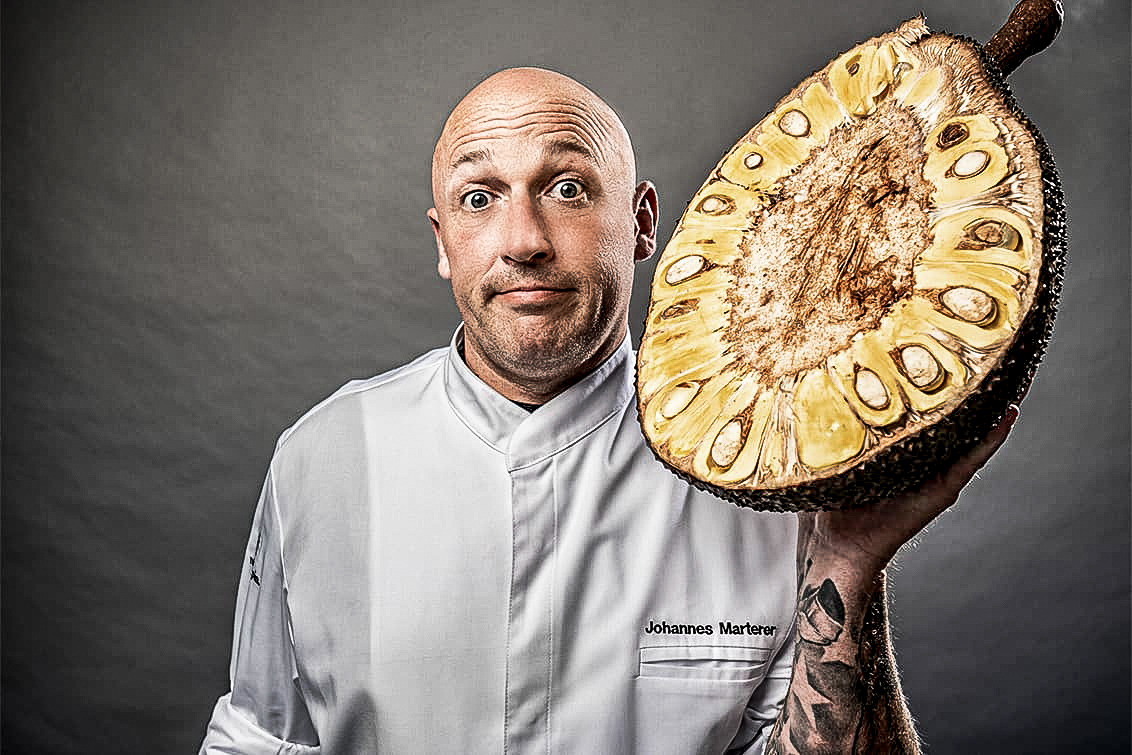
Image: Gerd Tschebular
What does it taste like?
But let’s go back to the preparation part. Most of the time, when Westerners talk about preparing jackfruit, they’re referring to it in its green or semi-ripe form. In countries like India, Bangladesh, and Indonesia, on the other hand, jackfruit is most often sold ripe, packed in sugar; the ripe fruit tastes like a mixture between banana and pineapple. Most importantly, ripe jackfruit is a lot juicier than green, which is the whole point when using the unripe variety. Green jackfruit is surprisingly firm, but malleable, with a faint note of mango.
Consistency-wise, it’s a bit floury, but not so much that it tastes dry. “I don’t think jackfruit has a lot in common with meat,” Marterer remarks, seeming almost bewildered by the hype surrounding jackfruit as a substitute for animal products. “It’s really a shame. Most of the time, whether they’re working with the individual flowers or the pulp with all its thin fibers, people just hack it up, marinate it, sear it, and cook it sous vide so that they’ll get the flavor they want. And if you look at the packages available around here, they’re usually full of flavor enhancers and chemical additives.”
It’s true: creative types who know their craft (like Johannes Marterer) can only shake their heads at the lack of imagination in most Western jackfruit preparations. So what else does this underestimated fruit have to offer?
Multiple starring roles
Marterer’s first dish plays with the Western BBQ trope while also putting the jackfruit’s many hidden talents on virtuosic display. “I started by marinating the fibrous pulp, and then I vacuum-sealed it in homemade barbecue sauce. That changes the consistency, of course. Next, I seared the cooked pulp, and then simmered it in the barbecue sauce for about an hour and a half.” So far, so good. But then comes the twist: Marterer serves the barbecued jackfruit in a tortilla made of jackfruit flour. “I started by blanching the seeds like beans, peeling them, and drying them. After that, I ground them into flour in the Thermomix, though you can just as easily use a coffee grinder. The flour has a subtle chestnut flavor and yields a nice, starchy dough.”
One of Marterer’s favorite jackfruit creations may be “just” a little condiment, but the Bavarian chef loves the results: “If you tasted these blindfolded, you’d think you were eating pickles,” he says. “I just sliced the individual flowers and vacuum-packed them for two days in vinegar, sugar, coriander, and a little dill, just like you would for pickles.” The result: a snack that’s slightly crunchy, though creamier in consistency than regular pickles, with a brilliant interplay of sweet and sour notes. At any rate, the mere fact that this dish features a harmonious combination of three textures derived from the same fruit is probably proof enough that the jackfruit has incredible potential. Indeed, every newly developed method of jackfruit preparation makes the possibilities seem even more infinite.
Sieh dir diesen Beitrag auf Instagram an
That’s also true of Marterer’s second dish, which features the tropical mega-fruit in multiple starring roles: scallops with jackfruit-celery puree and roasted jackfruit seeds. “The puree is actually just celery and jackfruit,” Marterer says. “I cut the individual jackfruit flowers into thin slices and then smoked them in the pot for around ten minutes. That smoky note blends with their slightly sweet natural flavor, and in combination with the celery, the puree is a nice balance of bitter and fruity.”
How else can the jackfruit be used?
Though the Western culinary world tends to ignore jackfruit seeds completely, Marterer considers them a veritable playground of unlimited possibilities. “For this particular dish, I started by roasting and salting them, and then I peeled them and crumbled them. They have a slightly mealy taste and provide a nice starchiness. Peeled jackfruit seeds are a great side dish in general. You can just boil them in salted water for about 15 minutes. It gives them a flavor reminiscent of chestnuts, and when they’re boiled, they’re crumbly like chestnuts as well.”This is definitely among the jackfruit’s most fascinating and useful qualities: though raw jackfruit is typically filed under “sweet” and “fruity,” its uses in savory dishes are incredibly many and varied.
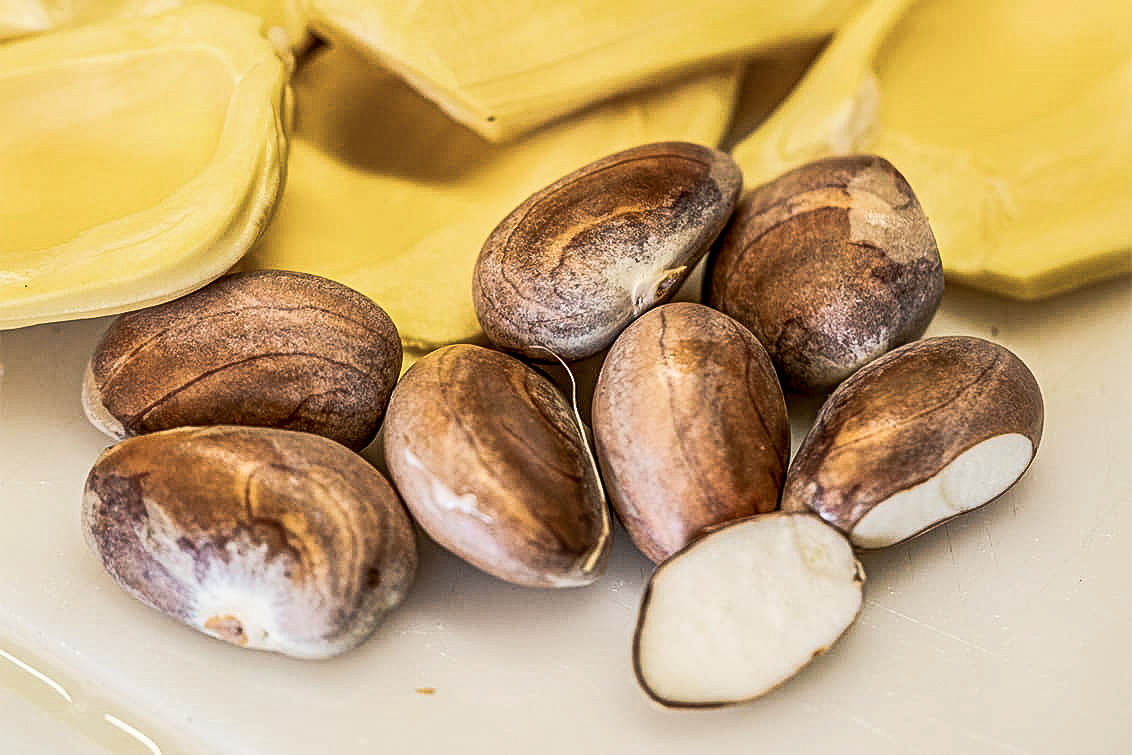
The jackfruit’s individual flowers and seeds are an unimaginable playground for any talented kitchen wizard. Flour, puree, “pickles,” burritos, ice cream – the possibilities are endless and remain a secret far too well-kept | Image: Gerd Tschebular
The food industry tends to focus on the fibrous pulp, which shows what a limited understanding it has of this amazingly versatile fruit. Sure, if you marinate the pulp in barbecue sauce and then sear it, the consistency is vaguely reminiscent of red meat – enough so that it can probably pass as pulled pork, at least to vegans who haven’t tasted real meat in a while.
But as Johannes Marterer puts it, “Anybody can just hack up a green fruit and drown it in barbecue sauce.” Which is why Marterer dares to attempt a third dish where he switches everything up: teasing the sweetness out of the green jackfruit in order to make a dessert.
Dangerous tunnel vision?
“I started by blanching the individual flowers in sugar water,” Marterer says. “After that, I freeze them and blend them into a really fine essence. I used that fruit puree to make a yogurt-based mousse and a vanilla-based ice cream.” Sure enough, both the ice cream and the mousse taste more like mango than banana or pineapple; the main difference is that the slightly mealy jackfruit makes them extra-creamy, especially the ice cream. Grated jackfruit seeds round the dessert out impressively. “They’re caramelized and then grated,” Marterer explains and gestures to the white seed chips, which look like coconut flakes next to the yellowish ice cream.
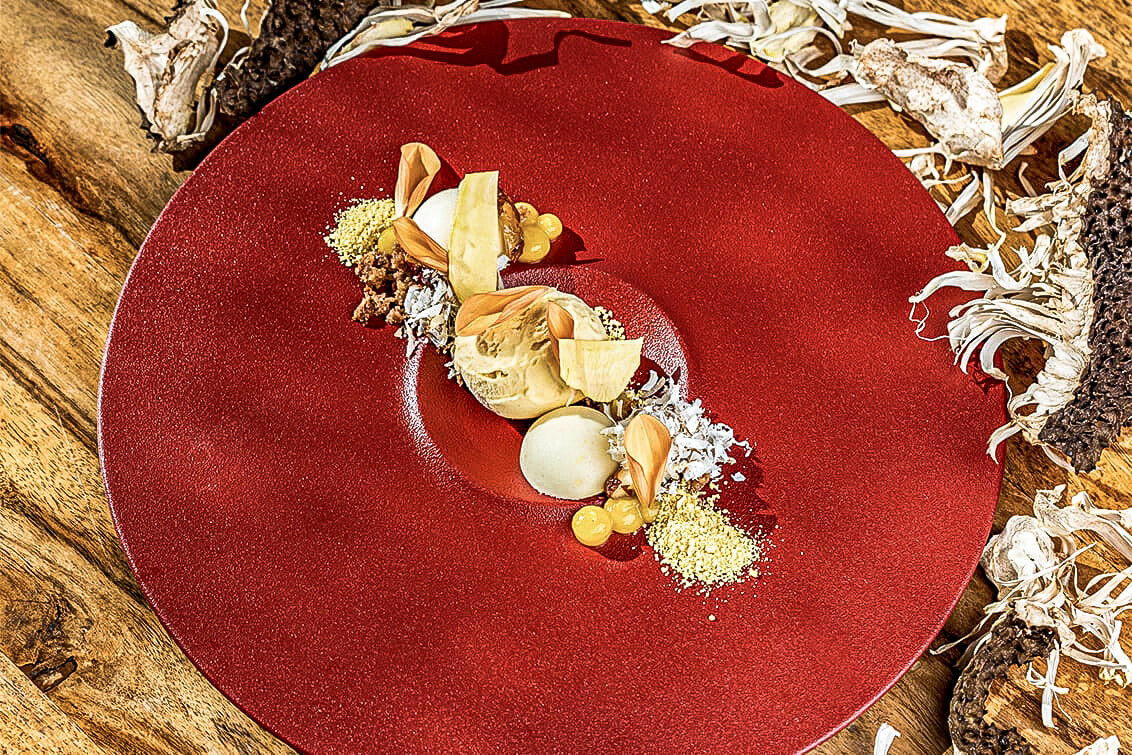
Image: Gerd Tschebular
Last but not least comes jackfruit powder: “To make that, I sliced open the pulp of the individual flowers, doused it in sugar water and lime juice, and then dehydrated it in the dehydrator. After that, you just pulverize it, that’s it.” As with the previous two courses, the versatile fruit once again shines thanks to its remarkable range of consistencies: “In terms of desserts, jackfruit is probably great in coffee cake, just to name one example. Since it exudes practically no liquid, jackfruit wouldn’t get nearly as mushy as plums,” Marterer says.
The dark side of the jackfruit hype
There’s something a little paradoxical about the current Cult of Jackfruit: Since it’s only marketed in our area as a meat substitute, both its virtues and its obvious flaws get swept under the rug. It seems that vegan tunnel vision has chosen to overlook its incredible potential and its clearly problematic environmental footprint. Like it or not, jackfruit is going the way of the avocado and the banana—which involves long transcontinental flights followed by miles of highway transport on its way to our plates.
Moreover, increasing demand in Europe has created jackfruit fever in Asia. Between 2015 and 2017 alone, 1.8 million tons of jackfruit were produced in India, along with a million tons in Bangladesh and 700,000 tons in Indonesia. The only problem? As with palm oil, rising jackfruit demand has led to entire fields being converted to monocultures; in some cases, whole forests have been illegally cleared. Fortunately, those are only the worst-case examples; as with other “exotic” products, environmentally conscious farmers and producers have stepped up as well.
Sieh dir diesen Beitrag auf Instagram an
At any rate, Marterer is convinced that jackfruit has a bright future in European fine dining. “What makes it so intriguing for high-end cuisine because it practically demands that you come up with something new every time. And yes, it’s not regional, and it’s not exactly cheap—a larger jackfruit can easily cost 80 euro or more—but I pay a ton for green almonds as well.” In addition to the techniques he used in the three dishes described here, Marterer thinks the jackfruit could be promising in a variety of amuse bouches. “I’m just thinking out loud here, but for example, you could just cut the individual flowers into thin slices, marinate them in vinegar, maybe combine them with tomato and parsley, and use that mixture to make a little roll with sweet and savory notes.”
It will be interesting to see whether and how jackfruit gains a foothold in fine dining—and to what extent it’s used as a protagonist rather than a substitute. As versatile as it is, jackfruit lacks that “luxury product” reputation that lures even dedicated regionalists to import it from the other side of the world. Then again, isn’t that where it can really shine? After all, unlike many luxury products, the whole fruit has a lot to offer in terms of both quality and quantity—as mentioned, the seeds can even be cooked like potatoes. Either way, here’s hoping that the days of jackfruit being reduced to a mere meat substitute are numbered.


